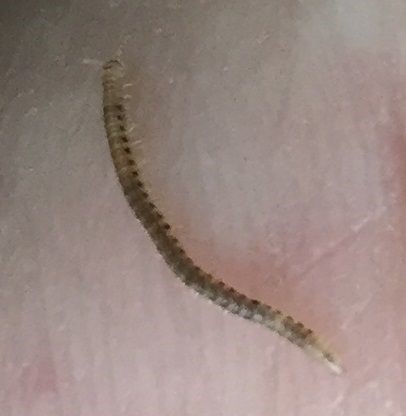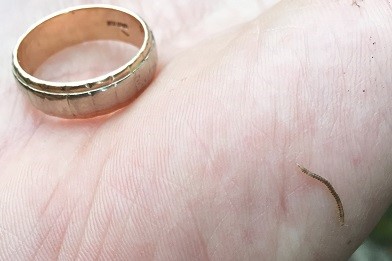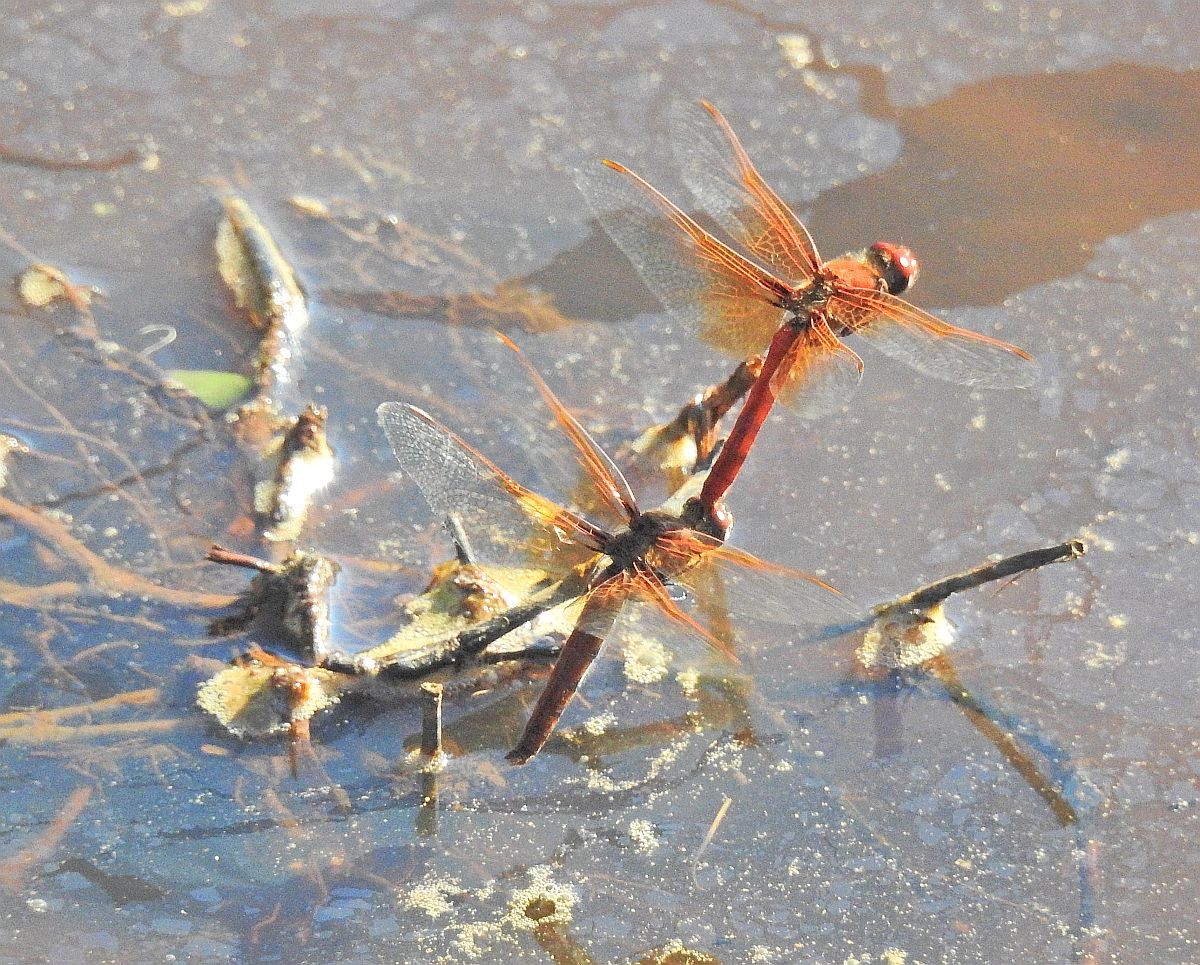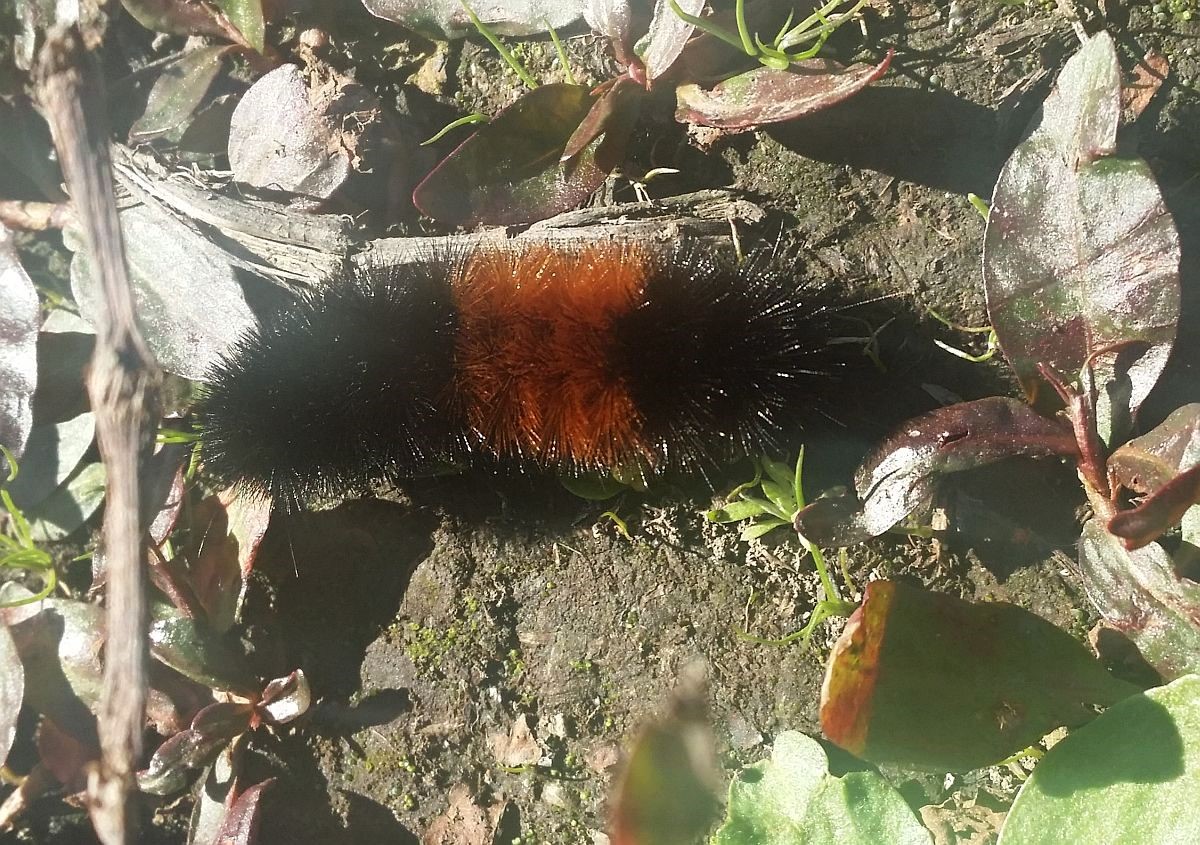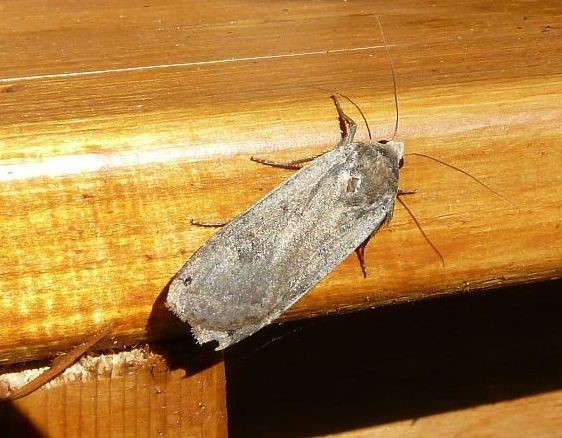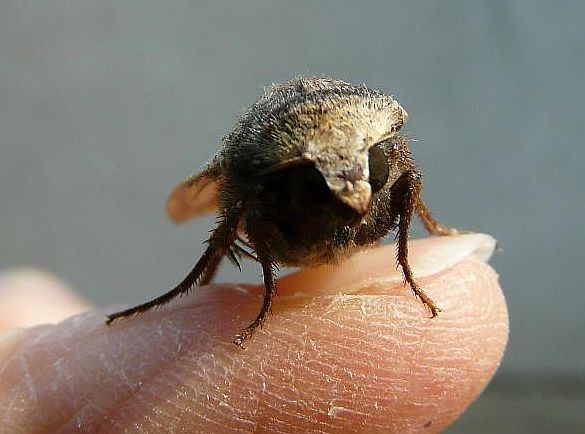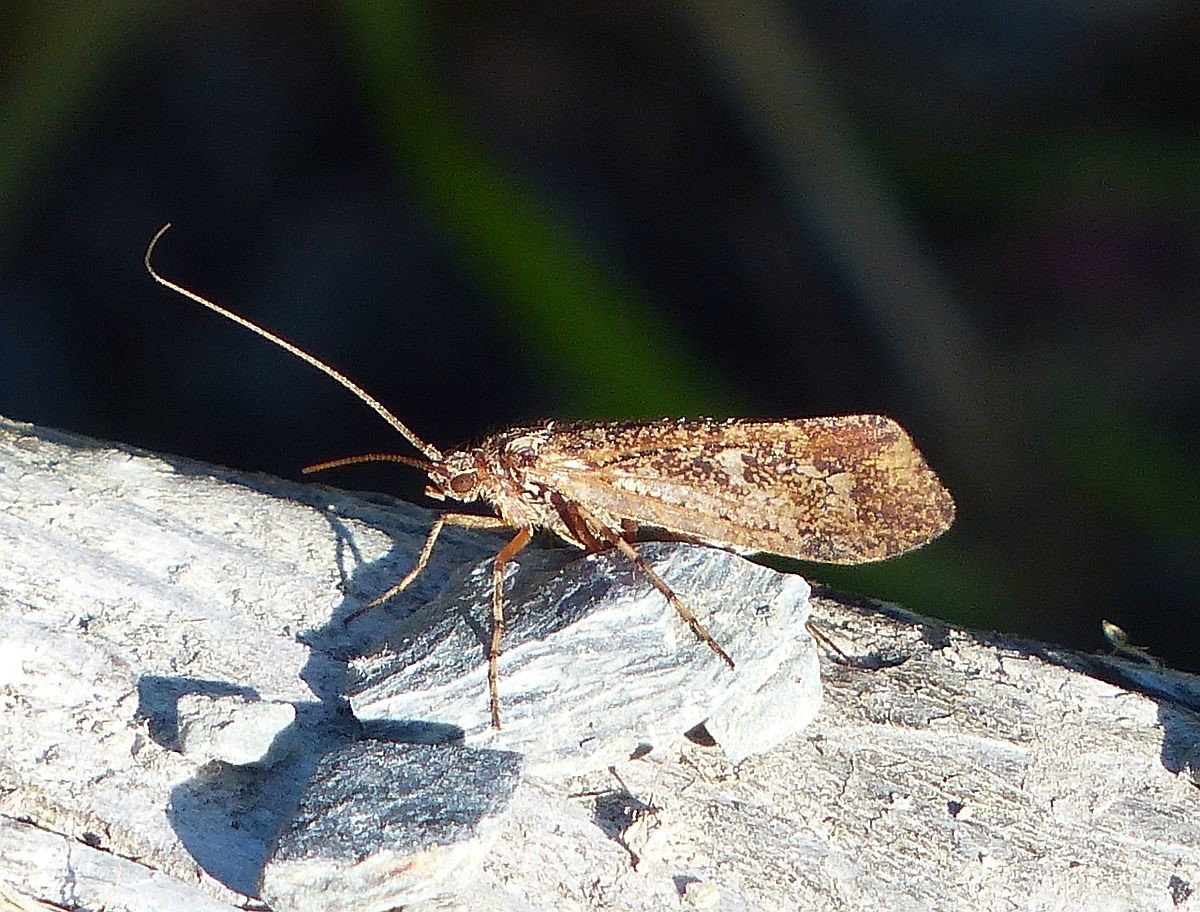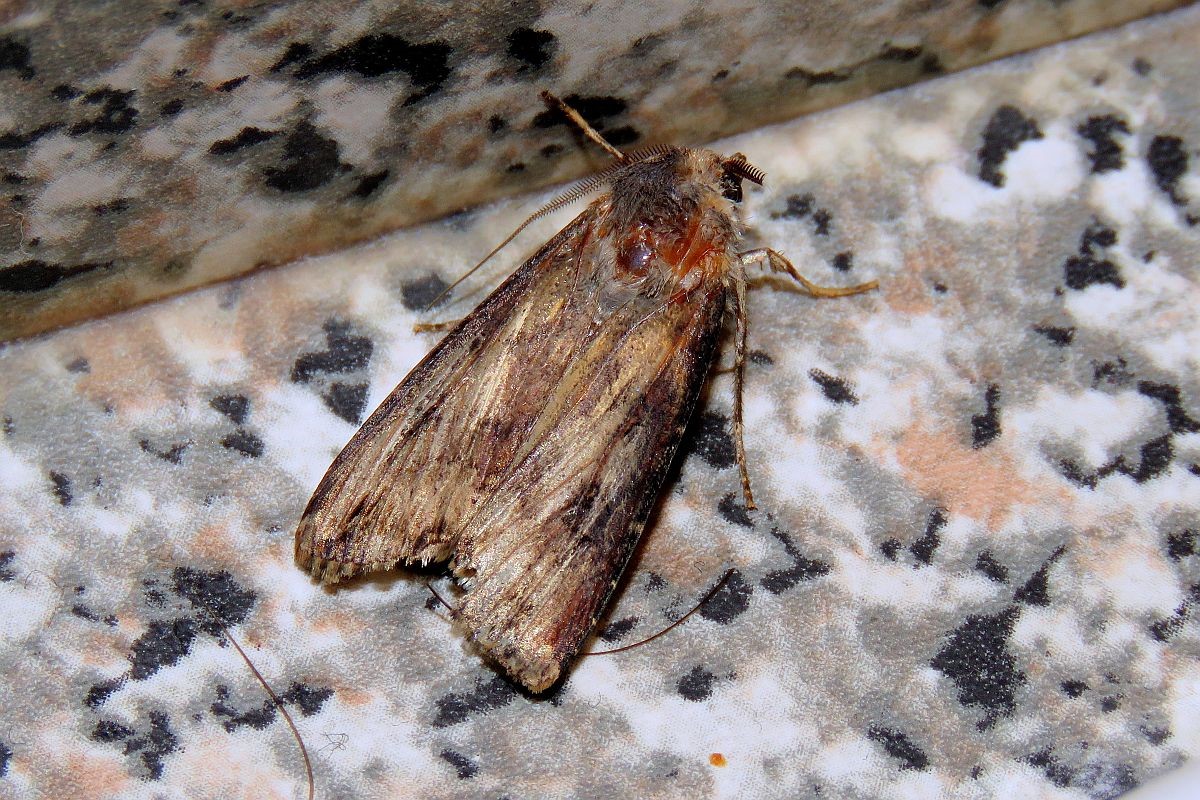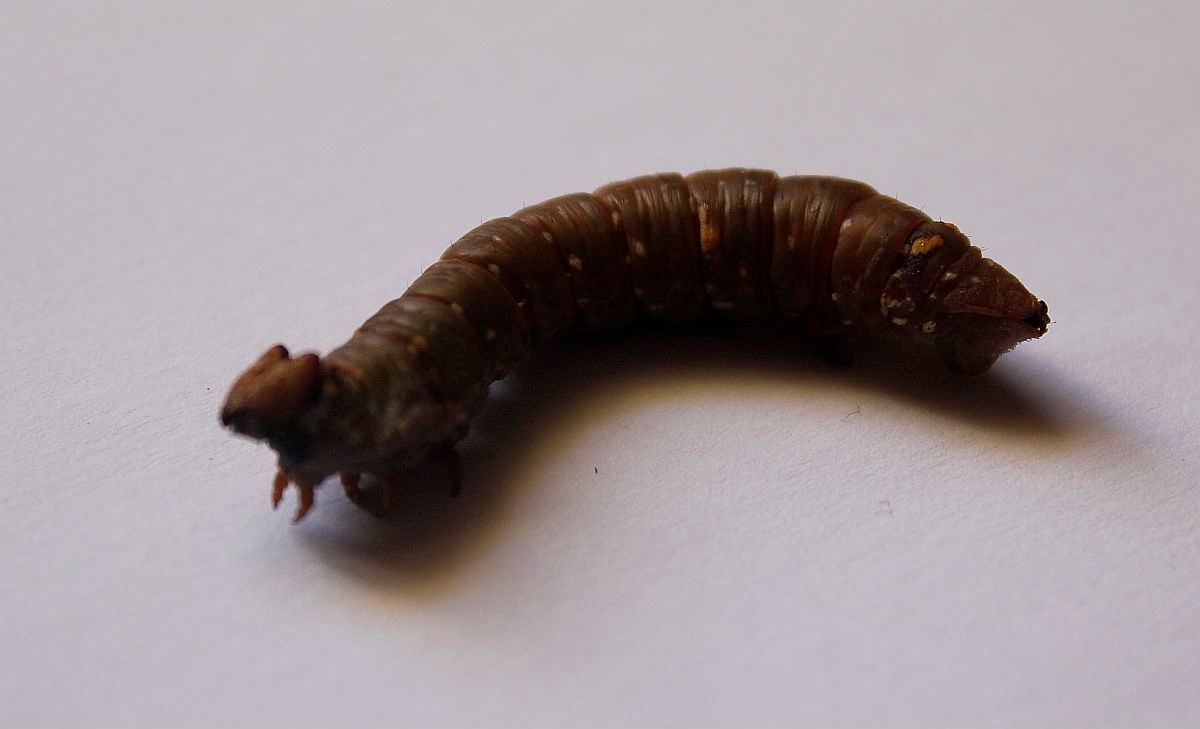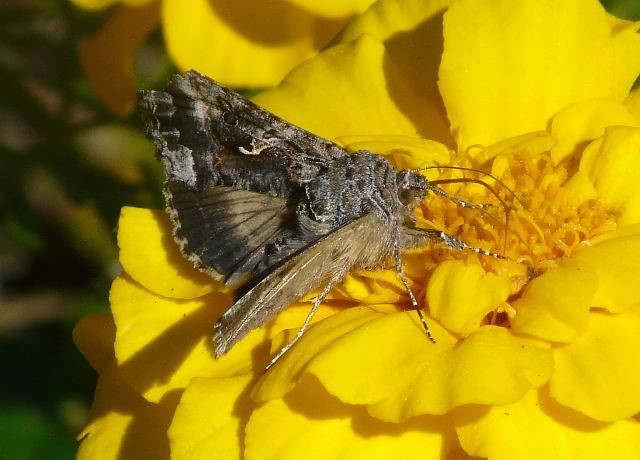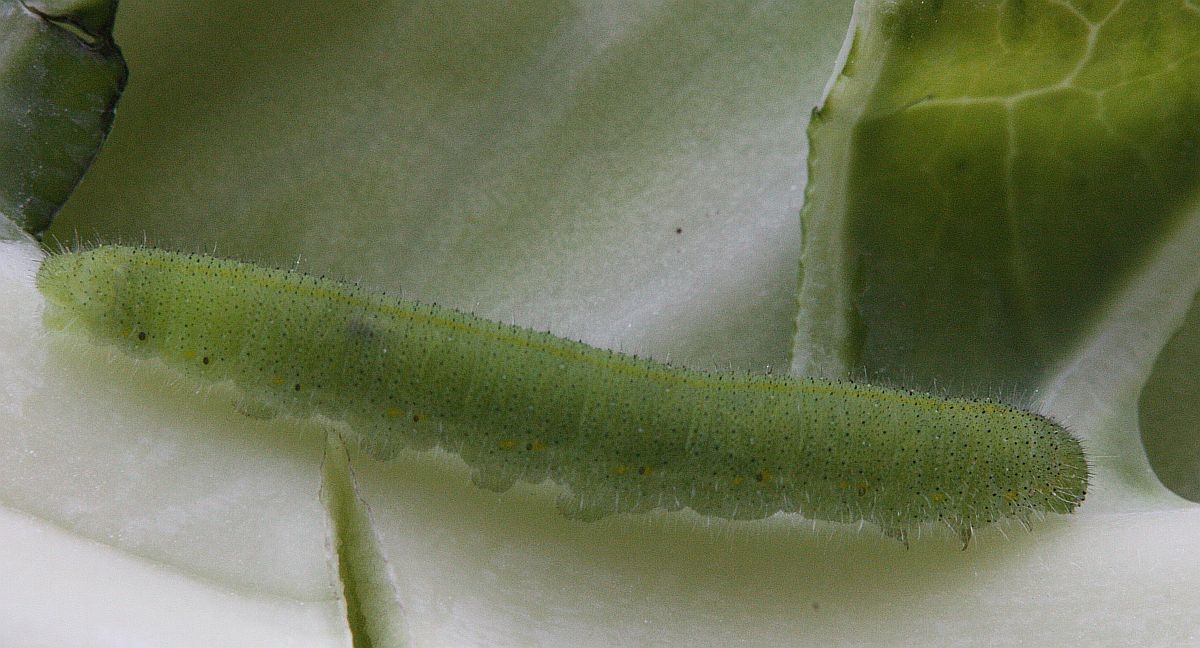2015 October 4
October Butterfly Walk. In spite of tempting competing attractions, such as a Black-throated Sparrow and a Cattle Egret, five butterfly enthusiasts turned up to see if they could find a last few butterflies before the onset of S.A.D. The party was Gail Chacter, Gordon Hart, Agnes Lynn, Helen Oldershaw and Jeremy Tatum. At Agnes’s suggestion, we decided to try the Horticultural Centre of the Pacific – Agnes had free passes for everyone! On the way there, some of the party saw a Cabbage White along busy Quadra Street. When we got to the HCP it was hot, calm and sunny, seemingly ideal for butterflies – but for a while none were to be found. Most of us contented ourselves with looking at the flowers while pretending to be looking for butterflies, and a few even took a sneak look at one or two birds. But after a while another Cabbage White appeared, and then another, and thick and fast they came at last (Lewis Carroll). In the end I think there were about nine Cabbage Whites, not including the Quadra Street one. All of us had an enjoyable afternoon.
Many thanks to Scott Gilmore for pointing out that the colourful bee/wasp shown on the September 29 posting is a sweat bee (Halictidae) of the genus Agapostemon, not as I had originally labelled it, a chrysidid wasp.
Annie Pang sends a photograph of a fly from Gorge Park on October 3. Hard to identify it with certainty, but it is probably an anthomyiid, though possibly a muscid.
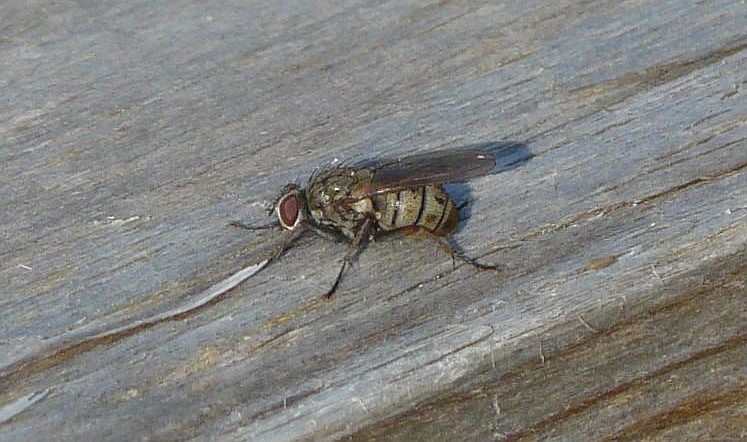
Fly (Dip.: Anthomyiidae/Muscidae) Annie Pang
Mike Yip sends a photograph from Nanoose of a pupa of Cerisy’s Eyed Hawk Moth.
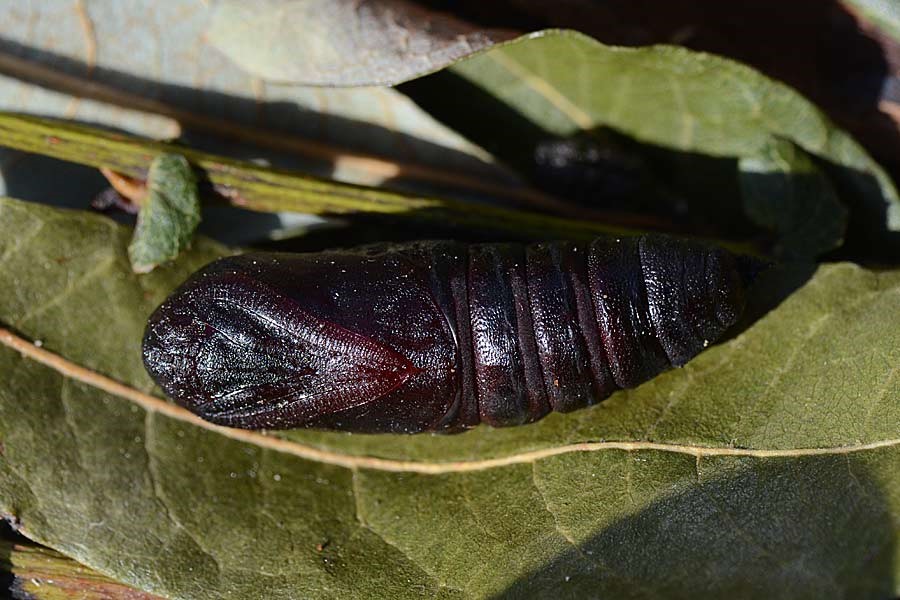
Cerisy’s Eyed Hawk Moth Smerinthus cerisyi (Lep.: Sphingidae) Mike Yip

